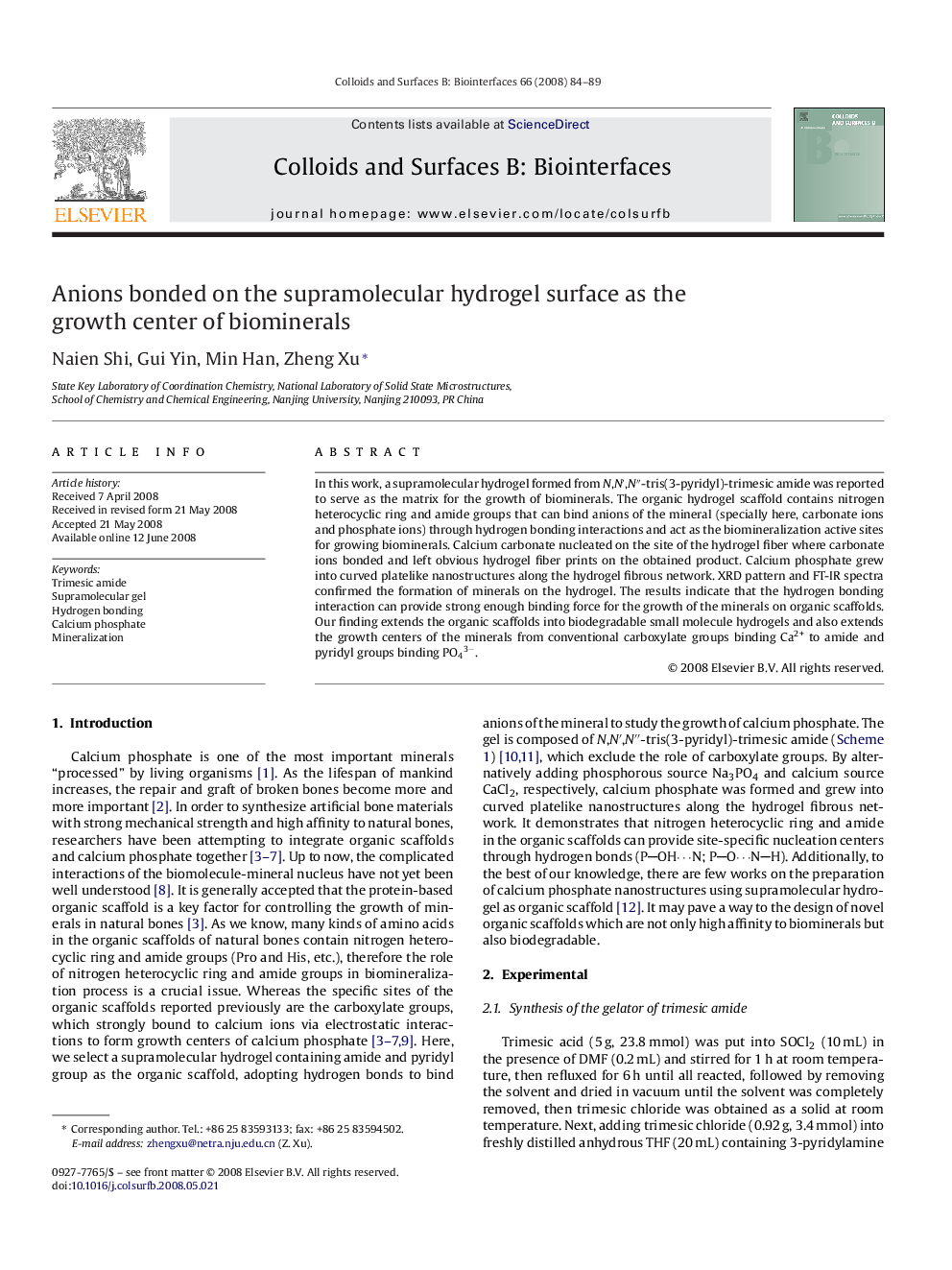| Article ID | Journal | Published Year | Pages | File Type |
|---|---|---|---|---|
| 602164 | Colloids and Surfaces B: Biointerfaces | 2008 | 6 Pages |
In this work, a supramolecular hydrogel formed from N,N′,N″-tris(3-pyridyl)-trimesic amide was reported to serve as the matrix for the growth of biominerals. The organic hydrogel scaffold contains nitrogen heterocyclic ring and amide groups that can bind anions of the mineral (specially here, carbonate ions and phosphate ions) through hydrogen bonding interactions and act as the biomineralization active sites for growing biominerals. Calcium carbonate nucleated on the site of the hydrogel fiber where carbonate ions bonded and left obvious hydrogel fiber prints on the obtained product. Calcium phosphate grew into curved platelike nanostructures along the hydrogel fibrous network. XRD pattern and FT-IR spectra confirmed the formation of minerals on the hydrogel. The results indicate that the hydrogen bonding interaction can provide strong enough binding force for the growth of the minerals on organic scaffolds. Our finding extends the organic scaffolds into biodegradable small molecule hydrogels and also extends the growth centers of the minerals from conventional carboxylate groups binding Ca2+ to amide and pyridyl groups binding PO43−.
